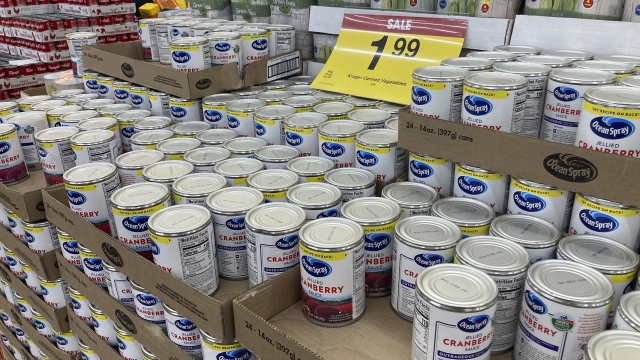When it comes to Thanksgiving, the turkey may take center stage, but it’s the supporting side dishes that really make the show, and one of the most iconic is cranberries.
Newsy caught up with Nodji Van Wychen, who is a third generation cranberry farmer in Warrens, Wisconsin and the president ofWetherby Cranberry Company.
"They were growing wild here in the very beginning," said Van Wychen.
Cranberries are one of only a handful of fruits that are native to the U.S. Indigenous tribes were already gathering them when pilgrims first showed up. According to the Smithsonian, tribes used it as an ingredient for making "pemmican," a type of survival bar packed with nutrients that helped them endure harsh winters – and one fur traders quickly put to use.
Van Wychen says legend has it, the name cranberry actually comes from a bird that often snacked on it in the wild bogs or marshes it grew in.
"When the cranberries are in blossom in late June, early July, in the early years, when the Native Americans were kind of roaming the area where the wild cranberries were growing, so were the sandhill cranes feasting in those same areas. And they said that the head and neck of the sandhill crane resembled the cranberry blossom, and they named them crane-berries. And then we have the mystery of the lost e! And it was shortened to cranberry," she said.
It wasn’t until the early 1800s in Maine that farmers found success in cultivating the cranberry.
SEE MORE: Why Do Presidents Pardon Turkeys?
Then in the 1900s, a lawyer by the name of Marcus L. Urann bought a cranberry bog and came up with the idea of canning the fruit to extend its shelf life. The harvesting window for cranberries is only about two months long, ranging from mid-September to mid-November – optimal timing for Thanksgiving.
This move proved a success and ultimately led Urann to collaborate with cranberry growers John Make Peace and Elizabeth Lee to create the Ocean Spray Cooperative. By the 1940s the canned jellied cranberry sauce we all know today became nationally available.
"Well, it started out in the pilgrims. They handpicked them. It was right on their Thanksgiving table. And fortunately, that tradition has carried on through," said Van Wychen.
Today Wisconsin is actually the leading producer of cranberries in the U.S. — well ahead of states like Massachusetts and New Jersey that tend to be more famous for the fruit. According to the U.S. Cranberry Marketing Committee, U.S. growers are projected to produce more than 8.3 million barrels this year.
"We measure our yield in barrels, which is the old standard weight, and 100 pounds equals a barrel. Wisconsin alone is estimated to produce 5.2 million barrels of cranberries this year, which will be expected to be a good crop," said Van Wychen.
"Out here where you’re standing, we're kind of surrounded by, I would imagine, about 75,000 pounds of cranberries, probably about a semi and a half when we are when we get it all fully loaded and head out of here," said Mike Gnewikow, co-owner of the Wetherby Cranberry Company.
SEE MORE: 10 Thanksgiving Movies To Relax With After The Big Meal
One of the coolest facts about cranberries is how they rise to the surface in the water. If you take a bite out of one — you can actually see four air pockets on the inside.
After being collected from the flood marshes, the cranberries are sorted, with some bound for the market just as they are. However the majority are turned into other products, like juice, relish and in some cases even wine!
"There's not a lot of cranberries growing all over the nation. And therefore, you get to this cranberry region and people just really like the cranberry wine because it's so unique and different," said Van Wychen.
Cranberries in their natural state have one of the lowest levels of sugar of all the fruits — about four grams per cup. But the jellied stuff in the can? About 21 grams per half-inch slice.
Regardless of how you choose to enjoy them, Van Wychen says she hopes you at least give them a try, especially at Thanksgiving.
"We are very fortunate that cranberries are very healthy to the consumer and consumers are being very health conscious nowadays. If you aren't using them year-round, at least have cranberries on your Thanksgiving table," said Van Wychen.
Trending stories at Scrippsnews.com



